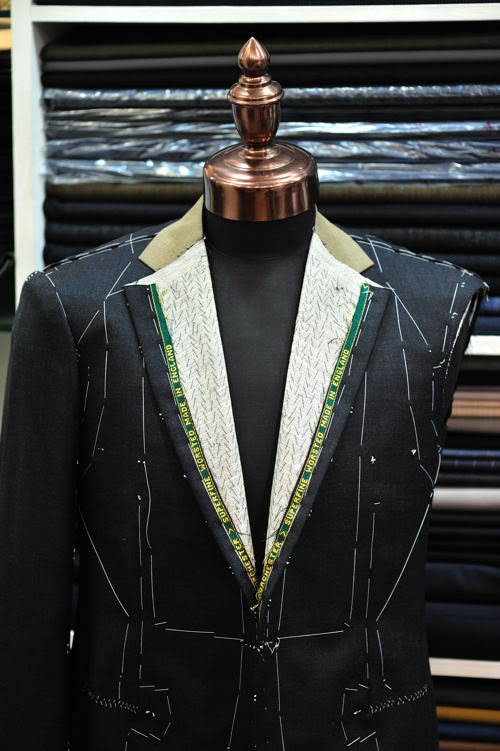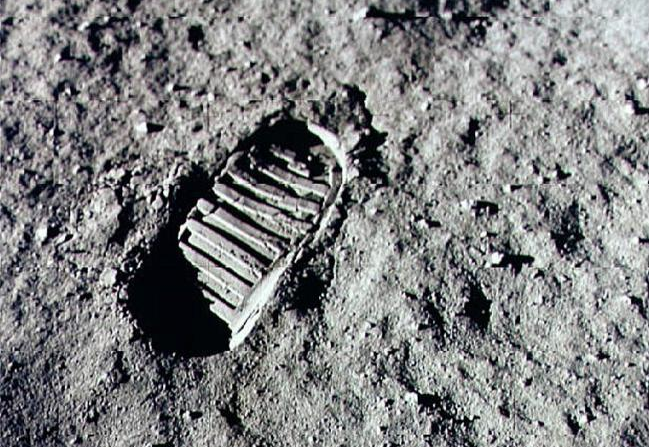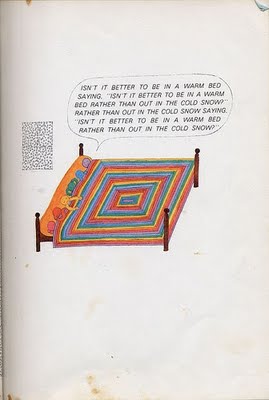 Sticker shock palliative: "Don't choke. Bespoke!"
Sticker shock palliative: "Don't choke. Bespoke!"
Okay, maybe you still won't feel better about paying big bucks for what you think ought to be yours fer nuthin', but at least you know the person selling whatever you're buying thinks hand crafted goodness is worth the price.
A couple of weeks ago, Adam Davidson wrote a terrific short article in the Sunday New York times on the peculiar and economically dismal business of hand made haberdashery.
You don't have to be a clothes horse to recognize one of the strange ironies of his story, and how it relates to creative work at a place like 1AU Global Media. Hand worked wonderfulness costs money, but hand worked wonderfulness does not get made in massive Pacific rim factories. Still, you have to ask yourself if any handmade anything is ever worth the pain, for buyer and seller alike. Like all things of vital importance, the answer depends.
We understand the seller's dilemma immediately. Handwork means there's no economy of scale. You can only make what you can produce yourself, and you can only raise prices so far until you destroy your own market.
For the buyer there's the hassle and headache of having to specify endless details for that special custom something. Specificity takes time at all stages of the process and generally costs a lot more than a commodity. And yet the option persists. What's more, some things practically demand handwork while some things inevitably require assembly line solutions.
You probably buy a certain class of handmade products regularly: food. You know that deli you always visit where they make your turkey and sprouts on rye to your own, custom spec whenever they see you come in the door--extra hot peppers, hold the mayo? It might just be a sandwich, but it couldn't get made the way you really want in a factory, on an assembly-line, or by machine. Way down the spectrum there's the linen and candlelight place downtown for which you made a special Saturday night reservation. The ginger Seabass with asparagus you ordered appears at your seat by means of delicate hand work in the kitchen. Unlike the waxed papered sandwich at the deli, all the little details matter here: the precisely poached vegetables, the razor thin curly cue of lemon skin along the fish, the cobalt patterns on the plates themselves.
There's no such thing as a handmade car, at least not in a conventional sense. But this is really a blind alley. By coming up with examples of mass production's efficiencies and successes we're avoiding the central question. We understand why handmade goods cost more. The question is really one of value proposition: do you consider that cost overage worth it? It's arguable that all restaurant purchases require some measure of handwork, perhaps more than most other industries. There may not be a lot riding on a successful outcome of your turkey sandwich. If you're honest with yourself, the same could be said of that expensive Saturday restaurant experience, too.
But does it matter?
It matters to me.
I cannot pretend that modernity's technological marvels sometimes facilitate just what I'm looking for without need for an artisan's influence. The computer I'm using at this moment came off a factory assembly line. (I'm going to side-step the enormous creative collective that designed this electronic palantir.) So did the desk chair on which I'm sitting. But most of the commissions we undertake here at 1AU are for creative work that's precisely unlike anything that's come before. That's the great differentiator, and that's why slapping together a bunch of video clips in the preinstalled software on your own computer isn't the same thing.
Adam Davidson's article talks about a Jamaican tailor living in Brooklyn who makes $4000 suits for a living but could never afford to buy what he sells. Does he make suits for the money? Of course. But is he in it for the money? I doubt it. It's too much work, too much identity, too much of himself in each suit that leaves on the wealthy backs of his customers. When someone walks out of his shop wearing a sharply creased suit to a midtown power meeting, the immigrant tailor knows he just influenced––ever so slightly perhaps, but genuinely influenced––the direction the world will tilt that day. Whether it tilts for good or ill is a subjective consideration--a big one, I realize--but I'll leave that for another day. He added something to the world, something of himself, and that makes all the difference.
Money pushes all of us around, no doubt. But I've yet to meet a creator who avoids doing the actual work of creation. The cynical part of my brain compartmentalizes industrialists from more easily identified creators, from artists. But I think this is probably a narrow view. The successful industrialist creates by establishing wide-field solutions to complex problems. He or she may not be designing the new 3D model for a piece of consumer gadgetry, or the actual sewing patters for the fall pret a porter collection, but he or she is solving conceptual problems to bring those items to life. Handwork? Hard to say. I suspect that craftsmanship is a term that fits more comfortably with the work of actual, physical creative work. But creative work always requires handwork, no matter what form it takes. That this creative process affords different navigational routes through time with different appraisals about the value of money is what makes it tricky. The big differentiator, I believe, is that while the "mass producer" may be motivated by the creative impulse, the hand working creator almost always sees themselves in the labor. I suspect that while all of us who do one-off, custom projects want to be respected and well paid, we don't do what we do simply for money. We do what we do to change the world's tilt, even if it's for just a moment.
--MS
PS -- Have something to say? Leave us a comment! Don't want to miss the latest from 1AU? Sign up on our mailing list. (Cool email like ours is better than that boring stuff that clutters your inbox, right?) Consider yourself a fan? Please re-Tweet us, post to Facebook, or otherwise forward us to your friends. Cool? Yep: cool.




